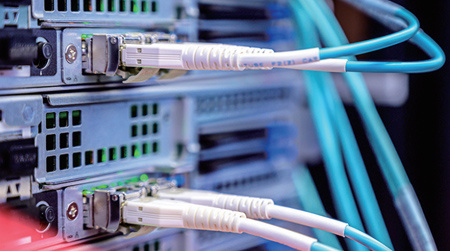15
2025
-
06
Navigating the World of Fiber Optic Splitters: Key Considerations
Understanding Fiber Optic Splitters
Hey there! If you’ve ever dabbled in networking or telecommunications, you’ve likely come across the term Fiber Optic Splitter. But what’s the fuss all about? Simply put, a fiber optic splitter is a device that divides a single optical fiber into multiple outputs. It’s like sharing a pizza with friends—one delicious pie turned into several slices!
Why Use a Fiber Optic Splitter?
So, why bother with a Fiber Optic Splitter? The answer is pretty straightforward. These nifty gadgets are essential in optical networks, enabling multiple users to share a single fiber connection. This is particularly useful in scenarios like:
- Telecommunication networks
- Data centers
- Broadband services
With the rise of high-speed internet, understanding fiber optic technology is crucial, and splitters are a key component of this ecosystem.
Types of Fiber Optic Splitters
There are a couple of main types of Fiber Optic Splitters to consider:
- Planar Lightwave Circuit (PLC) Splitters: These are compact and highly efficient, perfect for large-scale networks.
- Fused Biconical Taper (FBT) Splitters: Great for smaller applications, but they have limitations in terms of wavelength.
Choosing the right type really depends on your specific needs, so keep that in mind!
Key Considerations When Using Fiber Optic Splitters
Alright, let’s dive into some crucial 注意事项 (considerations) when working with fiber optic splitters. Trust me, you don’t want to overlook these!
1. Compatibility is Key
First things first, make sure the Fiber Optic Splitter is compatible with your existing network. It’s like making sure your phone charger fits your device; otherwise, you’re just wasting time and energy!
2. Pay Attention to Losses
Next up, be aware of optical loss. Every splitter comes with a certain amount of insertion loss, which can affect the overall performance of your network. Keeping losses to a minimum ensures that your data travels smoothly—like a well-oiled machine.
3. Location, Location, Location!
Placement is everything. When you’re installing a Fiber Optic Splitter, consider where it will be housed. Ideally, it should be in a secure, dry location to prevent damage. No one wants their precious network equipment exposed to the elements!
4. Regular Maintenance
Just like your car needs regular oil changes, fiber optic splitters benefit from routine check-ups. Keeping them clean and inspecting for any physical damage can save you a world of trouble down the line.
Future-Proof Your Network
As technology continues to leap forward, investing in high-quality Fiber Optic Splitters can help future-proof your network. With the demand for faster data transmission increasing, having reliable equipment will keep you ahead of the curve.
Wrapping It Up!
In conclusion, understanding the ins and outs of fiber optic splitters is crucial for anyone involved in networking. With the right knowledge and precautions, you can ensure your network remains efficient and reliable. So, go ahead and share that pizza—er, fiber connection—with confidence!
Relevant news
CONTACT US
Add: No.1 Yonghe Third Road, Industrial Functional Zone, Chengdong Street, Yueqing City, Wenzhou City, Zhejiang Province
Tel: +86-577-62315998
Wechat : +86-15067871794
Fax: +86-577-62328331
E-mail: bonnie.chen@ouyahua.com











